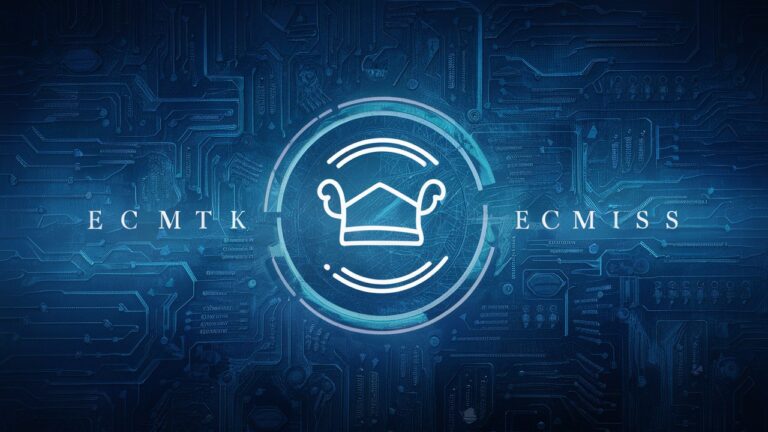Introduction
In our increasingly digital world, organizations that manage sensitive cases—whether in social services, healthcare, or judiciary—face a pressing need for systems that combine efficiency, collaboration, and security. Enter ecmiss, short for Electronic Case Management and Information Sharing System. Far from just another software tool, ecmiss is transforming how agencies document, manage, and coordinate complex casework. By streamlining workflows, ensuring accurate data sharing, and reinforcing compliance, ecmiss empowers multidisciplinary teams to work smarter, not harder. In this article, we’ll explore what ecmiss is, how it operates, its significant benefits, common challenges during adoption, and why it’s becoming an essential platform for modern organizations.
What Is ecmiss? Origins, Definition & Purpose
At its most straightforward, ecmiss stands for Electronic Case Management and Information Sharing System Dar-CareIt’s Shifting. Designed to serve sectors like law enforcement, public health, and social services, ecmiss enables secure entry, storage, and sharing of case information across multiple departments or agencies. It avoids redundancy, reduces paperwork, and ensures each stakeholder works with the most recent data—for faster, smarter decision-making.
Core Features & Functional Strengths
Robust and versatile, modern ecmiss platforms typically include the following key functionalities:
-
Case Intake & Registration – Quickly register new cases with digital forms or direct data integration, minimizing manual errors Dar-Care.
-
Document Management – Scan, store, retrieve, and electronically sign critical case documents in a centralized repository Dar-Care.
-
Workflow Automation – Automate reminders, assignments, and stages of case progression to maintain timely action Dar-Care.
-
Interagency Collaboration – Share case data securely among authorized users while preserving confidentiality Dar-Care.
-
Reporting & Analytics – Real-time dashboards highlight workloads, case status, and trends that guide strategic decisions Dar-Care.
These features together create a system where outdated files, communication delays, or fragmented workflows become a thing of the past.
Why Agencies Are Adopting ecmiss: The Benefits
Efficiencies aside, ecmiss offers tangible, impactful benefits across sectors:
-
Greater Productivity – Automating repetitive processes frees up time to focus on case outcomes and stakeholder engagement Dar-Care.
-
Improved Accuracy & Data Integrity – Centralized entry and storage eliminate data duplication and inconsistencies Dar-Care.
-
Strong Security & Oversight – Through encryption, access controls, and audit capabilities, ecmiss protects sensitive records and enhances compliance Dar-Care.
-
Efficient Collaboration – Breaks down silos, allowing multidisciplinary teams to respond quickly with aligned information.
-
Informed Decision-Making – Dashboards make operational insights clear, enabling more strategic planning Dar-Care.
Real-World Use Cases
Several sectors are actively leveraging ecmiss to elevate their operations:
-
Social Services – Managing child protection workflows across field officers, legal teams, and support departments with shared digital case files Dar-Care.
-
Healthcare – Coordinating patient care plans, referrals, and case notes in one platform used by doctors, nurses, and care coordinators Dar-Care.
-
Law Enforcement / Legal – Police departments and prosecutors track filings, evidence, and hearings with consistent updates, reducing delays Dar-Care.
These implementations underscore how ecmiss bridges logistical gaps and cultivates unified workflows across professions.
Challenges & Considerations in ecmiss Adoption
While compelling, transitioning to ecmiss comes with hurdles:
-
Initial Setup & Training – The system must be configured to match case types and workflows; users need meaningful onboarding Dar-Care.
-
Data Migration – Legacy records, especially in outdated formats, may require careful integration to ensure completeness.
-
Cost & Return – Licensing, hardware, and training involve upfront investment—though gains in speed and accuracy typically justify the cost.
Proper planning, training, and stakeholder engagement are essential to a smooth rollout.
Conclusion
Embracing ecmiss marks a pivotal shift toward modern, transparent, and efficient case management. It gives organizations the tools to register, document, and navigate cases collaboratively and securely—moving from fragmented paper-based workflows to unified, intelligent systems. As public trust and operational demands grow, ecmiss provides a strategic foundation for agencies to serve better, respond faster, and govern smarter. When implemented thoughtfully, ecmiss is not just a management system—it’s a game-changer in digital transformation.
FAQ: Frequently Asked Questions
Q1: What does “ecmiss” stand for?
It stands for Electronic Case Management and Information Sharing System, a digital platform for managing and collaborating on case records Dar-CareIt’s Shifting.
Q2: Which sectors commonly use ecmiss?
It’s widely adopted in social services, healthcare, legal/judicial systems, law enforcement, and nonprofit case operations Dar-Care.
Q3: What makes ecmiss more efficient than traditional methods?
It reduces reliance on paper, automates workflows, centralizes documentation, and ensures all parties access real-time information Dar-Care.
Q4: What challenges can organizations face when implementing ecmiss?
Common issues include migration of old data, staff training, configuration complexity, and upfront implementation costs Dar-Care.
Q5: Is ecmiss customizable for different organizations?
Yes. Most modern ecmiss platforms offer modular design and integration capabilities, allowing adaptation to various workflows and growth needs Dar-Care.
